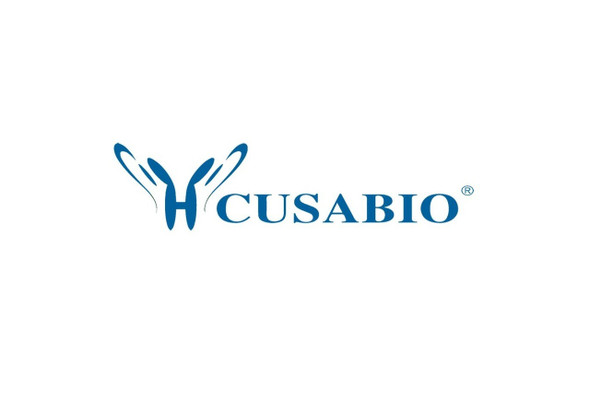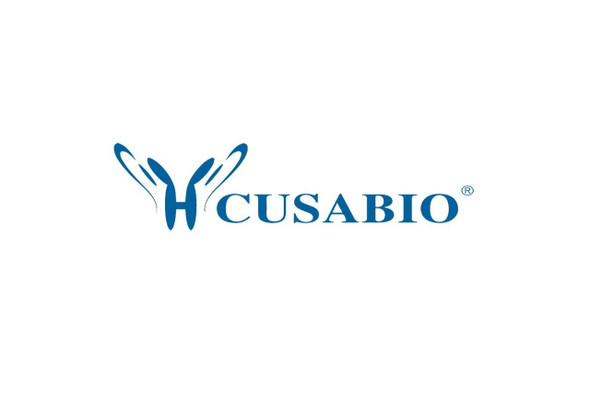Cusabio Active Proteins
Recombinant Human C-C motif chemokine 22 protein (CCL22) (Active) | CSB-AP000951HU
- SKU:
- CSB-AP000951HU
- Availability:
- 5 to 10 Working Days
Description
Recombinant Human C-C motif chemokine 22 protein (CCL22) (Active) | CSB-AP000951HU | Cusabio
Protein Description: Full Length of Mature Protein
Alternative Name (s) : CC chemokine STCP-1 Macrophage-derived chemokine, Small-inducible cytokine A22, Stimulated T-cell chemotactic protein 1
Gene Names: CCL22,MDC,SCYA22,A-152E5.1
Research Areas: Immunology
Species: Homo sapiens (Human)
Source: E.Coli
Tag Info: Tag-Free
Expression Region: 25-93aa
Sequence Info: GPYGANMEDS VCCRDYVRYR LPLRVVKHFY WTSDSCPRPG VVLLTFRDKE ICADPRVPWV KMILNKLSQ
Biological Activity: Fully biologically active when compared to standard. The biological activity determined by a chemotaxis bioassay using human T-lymphocytes is in a concentration range of 10-100 ng/ml.
MW: 8.1 kDa
Purity: >97% as determined by SDS-PAGE and HPLC.
Endotoxin: Less than 1.0 EU/µg as determined by LAL method.
Relevance: May play a role in the trafficking of activated/effector T-lymphocytes to inflammatory sites and other aspects of activated T-lymphocyte physiology. Chemotactic for monocytes, dendritic cells and natural killer cells. Mild chemoattractant for primary activated T-lymphocytes and a potent chemoattractant for chronically activated T-lymphocytes but has no chemoattractant activity for neutrophils, eosinophils, and resting T-lymphocytes. Binds to CCR4. Processed forms MDC (3-69) , MDC (5-69) and MDC (7-69) seem not be active.
PubMed ID: 9312138; 9151897; 14702039; 10493829; 15616553; 15489334; 9430724; 11241286
Notes: Repeated freezing and thawing is not recommended. Store working aliquots at 4℃ for up to one week.
Function: May play a role in the trafficking of activated/effector T-lymphocytes to inflammatory sites and other aspects of activated T-lymphocyte physiology. Chemotactic for monocytes, dendritic cells and natural killer cells. Mild chemoattractant for primary activated T-lymphocytes and a potent chemoattractant for chronically activated T-lymphocytes but has no chemoattractant activity for neutrophils, eosinophils, and resting T-lymphocytes. Binds to CCR4. Processed forms MDC (3-69) , MDC (5-69) and MDC (7-69) seem not be active.
Involvement in disease:
Subcellular Location: Secreted
Protein Families: Intercrine beta (chemokine CC) family
Tissue Specificity: Highly expressed in macrophage and in monocyte-derived dendritic cells, and thymus. Also found in lymph node, appendix, activated monocytes, resting and activated macrophages. Lower expression in lung and spleen. Very weak expression in small intestine. In lymph node expressed in a mature subset of Langerhans' cells (CD1a+ and CD83+) . Expressed in Langerhans' cell histiocytosis but not in dermatopathic lymphadenopathy. Expressed in atopic dermatitis, allergic contact dermatitis skin, and psoriasis, in both the epidermis and dermis.
Paythway: Chemokinesignalingpathway
Form: Lyophilized powder
Buffer: Lyophilized from a 0.2 µm filtered PBS, pH 7.4
Reconstitution: We recommend that this vial be briefly centrifuged prior to opening to bring the contents to the bottom. Please reconstitute protein in deionized sterile water to a concentration of 0.1-1.0 mg/mL.We recommend to add 5-50% of glycerol (final concentration) and aliquot for long-term storage at -20℃/-80℃. Our default final concentration of glycerol is 50%. Customers could use it as reference.
Uniprot ID: O00626
Uniprot Entry Name: CCL22_HUMAN
HGNC Database Link: HGNC
UniGene Database Link: UniGene
KEGG Database Link: KEGG
STRING Database Link: STRING
OMIM Database Link: OMIM










